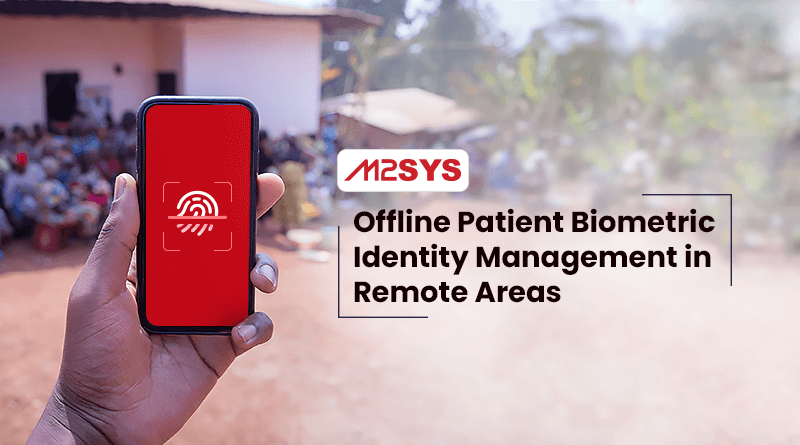Precisely figuring out sufferers is vital in medical services. Even the slightest error in identification can have vital penalties and end in improper therapy primarily based on a affected person’s medical historical past. On this article, we are going to clarify how M2SYS expertise applied an offline biometric affected person identification system for a healthcare supplier.
Buyer ache factors and necessities
A healthcare supplier working in distant areas with restricted web connectivity lately contacted the M2SYS group to handle challenges confronted by their current answer used for affected person registration and identification. Whereas their present system was in use, it was not scalable and didn’t operate offline, resulting in information latency points. These latency issues precipitated community bottlenecks, forcing the supplier to revert to a pen-and-paper system for recording affected person well being information. In mild of those points, the supplier expressed the necessity for an offline biometric turnkey solution that might allow environment friendly affected person registration and identification while not having an web connection. Additionally they expressed that they needed to make use of two modalities for biometric information assortment and identification.
An offline biometric answer for registration and identification
On-line biometric registration and identification sometimes depend on web connectivity to match particular person biometric traits with a central server. In distinction, offline biometric authentication can carry out these capabilities domestically while not having an web connection. Our group really helpful the on-premise deployment of the CloudABIS matching engine and CloudScanr seize instrument for the healthcare supplier, using finger vein and twin iris modalities for your complete course of. After attempting out CloudABIS by way of a 14-day free trial, the healthcare supplier was pleased with the end result and gave M2SYS the contract for offline deployment.
Our group decided the required server necessities, machine configurations, API name frequency, and enrollment numbers earlier than transferring the healthcare supplier’s biometric database of fifty,000 individuals to a base64 picture format and shifting it to the CloudABIS setting. Due to the offline deployment, the healthcare supplier needed to carry a database on their machine for registering and identifying sufferers. As such, they needed to decide the areas in order that they will carry the information in accordance with the placement and be certain that information was accessible when wanted.
Our group remotely created the server and setting and efficiently transferred their current information to the offline server. Our fast and profitable offline deployment allowed the healthcare supplier to check the biometric registration and identification course of, which proved to be scalable and met all of their necessities.
Benefits of offline biometric registration and identification
Whereas offline biometric registration and identification are tougher to develop than its counterpart, it has a number of benefits.
Elevated safety
Offline biometric information gives improved safety in comparison with on-line options as a result of absence of on-line information transmissions. Conserving all information on the machine considerably reduces the danger of information being compromised. In distinction, on-line biometric options are prone to safety vulnerabilities, necessitating extra safety measures or protocols to make sure information safety. Utilizing biometric information eliminates the safety dangers related to on-line connections.
Low information latency
Performing offline biometric registration and identification is quicker than a web-based system because it doesn’t depend on an web connection’s velocity and high quality. In distinction, information processing can take longer with on-line techniques relying on the machine’s connection to the server. Connecting to a server and ready for a response can add not less than 200ms to the time it takes to acquire a consequence, with the potential for this to extend to a couple seconds if the server is sluggish. With offline biometric registration and identification, execution time is significantly shorter. For example, the execution time is simply 26ms.
Work in all places
Whereas a cloud biometric server requires an web connection to speak with the server. An offline server can be utilized wherever with out web connectivity and can work simply the identical.
Take away
Offline biometric registration and identification present a viable answer for healthcare suppliers going through challenges associated to on-line connectivity and information latency. Implementing an offline biometric identification system for a healthcare supplier working in distant areas with restricted web connectivity has demonstrated how such a system can enhance information safety, scale back information latency, and work wherever, even in areas with out web connectivity if in case you have an analogous requirement and searching for an ideal answer supplier. You on the correct place. Contact us in the present day. Our group is right here to assist.
Author: Stanly Palma
Date: 2023-02-16 23:41:30



